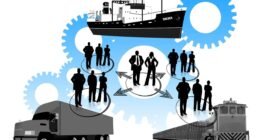Aviation Industry has consistently needed to oversee wellbeing and, for sure, saw security and it is dealing with wellbeing security sitting close by travelers’ stresses and fears over flying. To be sure, it appears to be far-fetched that travelers will out of nowhere quit thinking often about cleanliness and individual space after COVID-19, as anybody in a country that has loosened up limitations will have experienced. Today, with regards to the worldwide COVID-19 emergency, many expect that common flight will recuperate as a greener, more manageable industry. The foundation of long-haul strategies and ventures to fabricate an economical airplane business, including general flying, business flying, and airship cargo, is basic to guaranteeing the area’s future.
The air freight business is committed to lessening its natural impression through decarbonization and waste decrease programs and must wipe out, limit, or make up for its adverse consequences. Already, grand objectives were laid out, and numerous organizations are driving the way with intense and motivational ventures. To arrive at universally acknowledged targets, for example, the 17 United Nations Sustainable Development Goals and the Paris Agreement, all air freight organizations should start or speed up their reasonable transformation. Some legislatures are stepping in to help aeronautics by connecting Covid-19 to help assets with maintainable drives and effects. With the flying business under a solid spotlight as the world progressively focuses on ecological supportability, the airship cargo area as well should keep on putting resources into imaginative green arrangements. Inside the more extensive aeronautics industry, the biggest supporters of fossil fuel byproducts are business travelers and freight administrators. The International Civil Aviation Organization gauges worldwide airplane tasks contribute roughly 80% of flying CO2 discharges and 3.5% of the all-out radiative compelling (a proportion of progress in the environment) by every human movement.
Manageable Aviation Fuel: A Game-Changer The improvement of Sustainable Aviation Fuel (SAF) has worked the way for carriers all over the planet to arrive at net-no outflows in the impending years. While it is surely a much cleaner and less contaminating option in contrast to regular fuel, there are still a few drawbacks of reasonable flying fuel. Internationally, SAF makes up under 0.1% of flight fuel and it costs around four-fold the amount of lamp oil. Moreover, a few specialists contend that putting resources into SAF isn’t the right methodology to decarbonize the motor innovation and accept a greatly improved way is put resources into advances like hydrogen and electric impetus as these are the main long-haul answers for flying discharges. In any case, an ever-increasing number of organizations are presently putting resources into earth-shattering innovations to transform different feedstocks into flying fuel and a rising number of carriers are wagering on it, making a few conclusive positive developments in the rush to net-zero outflows.
Fuel utilization is a central point of contention in making air travel greener. The green plane representing things to come should utilize less petroleum derivative and more elective wellsprings of energy. Practical aeronautics fills (SAF) can be produced using: vegetable or cooking oils, animal fats, sugars and starches, certain algae, lignocellulose from wood waste, and a few unpalatable plants. Synhelion, a side project from the Swiss Federal Institute of Technology in Zurich, is fostering a sun-oriented fuel. Synhelion utilizes sun-oriented intensity to separate CO2 and water particles infused into a reactor to reproduce an engineered fuel. At the point when consumed in an airplane motor, for instance, this fuel will radiate just the CO2 caught from the air during its creation. This 100 percent sustainable fuel is supposed to be marketed in 2030.
As the results of environmental change become progressively apparent, making green airplanes has turned into a crisis. Innovations can assist with accomplishing this by decreasing fossil fuel byproducts all through the worth chain, from airplane plans to flight. By and by, the cost is a significant hindrance to these developments. Public specialists should consequently turn out to be more included and empower coordinated efforts between creative new businesses and corporates in the flying sector. Looking into the future, green advances in flight are being sought after at a quicker pace than any time in recent memory, even with the extreme effect of the COVID-19 pandemic. Different sorts of practical aeronautics energizes are currently accessible for use in airplanes, and further CO2 decreases are being sought after through new airplane advances and functional systems.










1 comment
Some genuinely nice stuff on this site, I like it.